
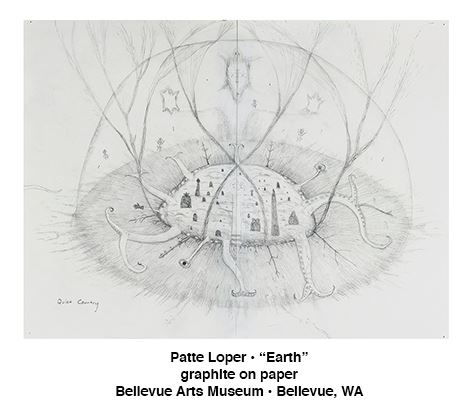
“There is another world, but
Before visiting Loper and Veltkamp’s exhibitions, the guest first passes through a series of installations that are worth mentioning. Ko Kirk Yamahira’s suspended installation hangs above the viewer while they also experience Tricia Stackle’s Color Spectrum Collection; sculptures that are designed specifically for human interaction. The objects were arranged in a circle and their undulating forms invite people to sit, lie down, climb, and otherwise experience them. Stackle is based in Mount Vernon, Washington, a city about 60 miles north of the museum, and this is part of an ongoing relationship between the artist and BAM. From their first art interaction in the museum, visitors are aware of their role and presence in and around the work. it is in this one.” The words of Surrealist poet Paul Éluard reverberate from the gallery walls of the Bellevue Arts Museum (BAM). Even though the quote is included in Patte Loper’s exhibition, it is possible that the general viewer can utilize questions raised by the phrase for multiple art exhibitions and artistic expressions. Empathy, creativity, perspective, and communication are all attributes that aid the inquisitive viewer, and all these characteristics come into play with the artworks currently in the museum. From Loper’s scientific labyrinth drawings to Joey Veltkamp’s vibrant reminders rooted in nostalgia, the exhibitions provoke the viewer to consider their role in the natural world, relationships with neighbors (human and natural), and humankind’s position in this world.
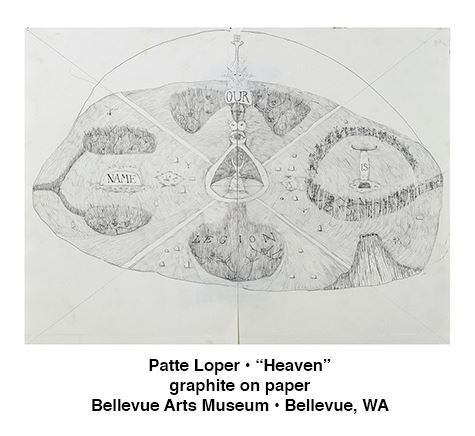
Patte Loper and Joey Veltkamp’s exhibits are both in the third-floor galleries of the museum. The interpretive text details that Loper’s exhibit began as a study in how the foundational theories of early museum collections and scientific explorations appeared to support a destructive relationship with the natural world, as opposed to promoting humankinds’ interconnectedness to that world. Later, the COVID-19 pandemic continued to push the artist to consider perspectives that were not human at all. What does a world look like if humans are not at the center? Further exploration in a cemetery led the artist to review our connectivity with the natural and spiritual world, and how all these elements relate and communicate to each other.
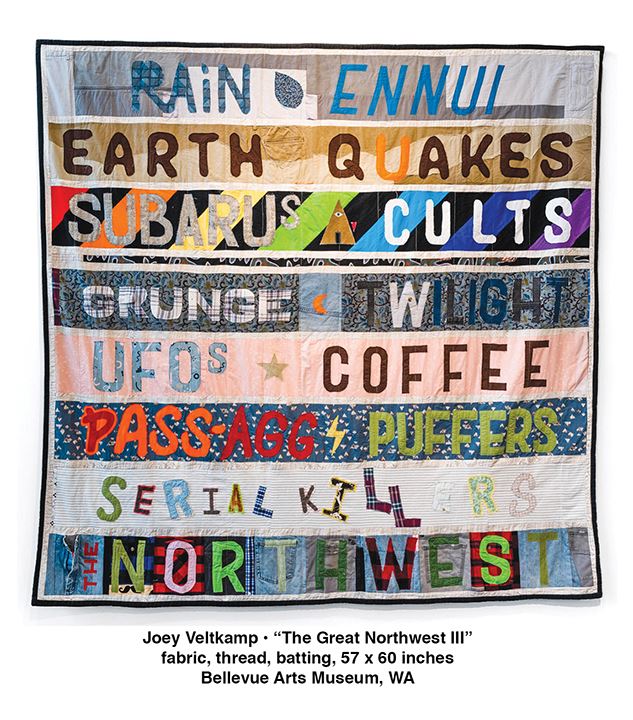
Loper examines these relationships in a series of drawings called “Tapestry Maps.” The interpretive museum texts connect these drawings to Hieronymus Bosch’s artwork, “The Garden of Earthly Delights,” which some scholars have interpreted as scenes of Heaven, Earth, and Hell. However, one interesting comparison is between Loper’s “Tapestry Maps” and the “Creation” scene by Bosch, which is visible when the triptych is closed. Visually, both works are devoid of color and reference a globe. Bosch’s “Creation” is perfect; empty of humans and occupied by thriving plant life. In contrast, Loper’s maps outline the movement of reality as our existence progresses from heaven to earth to hell, a result of the living and conscious creatures becoming more disconnected. In addition to these incredibly detailed drawings, Loper includes an installation and sculpture. The work is conceptual, and the subject matter is challenging, so it is helpful that the artist also includes a station for viewer participation and reflection.
Across the hallway, the viewer is immediately drawn to the playful and colorful work of Joey Veltkamp. Titled “SPIRIT!,” the exhibition includes many of the artist’s quilts, several drawings, banners, an exterior installation, and one rug. While the objects are numerous, the subject matter and mood is remarkably consistent. Veltkamp is interested in what makes his home unique: the food, people, beauty, and history of the Pacific Northwest.
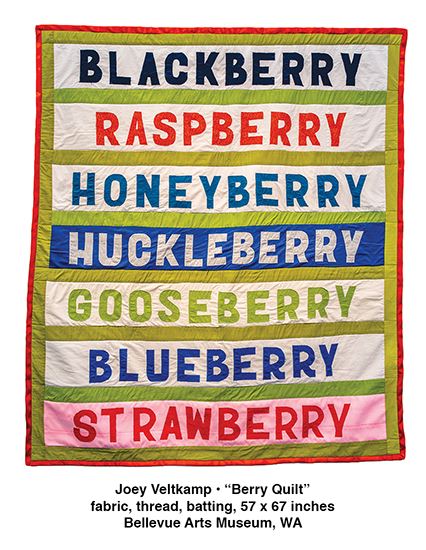
The exhibition is not lacking in Veltkamp’s whimsical sense of humor as he highlights some of the stranger elements of the Northwest. Twilight, Twin Peaks, serial killers, and Subarus are all mentioned in the colorful quilts on display.
Veltkamp’s exhibition is rooted in his lived experience as a queer folk artist living in the Pacific Northwest, and the show is filled with very personal references from his life and childhood. His dreams, hopes, and fears are all on display. Two quilts are presented on physical beds in a gallery, and above the beds hang beads and crystals on wire that are suspended from the ceiling. The materials catch the eye as they glisten and refract colorful light on the walls and people around them. The artist encourages guests to “walk around and feel the full experience of queerness: the joy, the sorry, the loss, the gifts, the experience.” The exhibition is an invitation to see the world with Veltkamp as your guide.
The exhibitions could not be more visually different, but it seems that some of the core messages and questions are related. How do we connect with ourselves? How can we be better neighbors? How can we work together to make this world a better place? Take a trip to Bellevue Arts Museum and maybe consider these questions yourself with the artists as your guide.
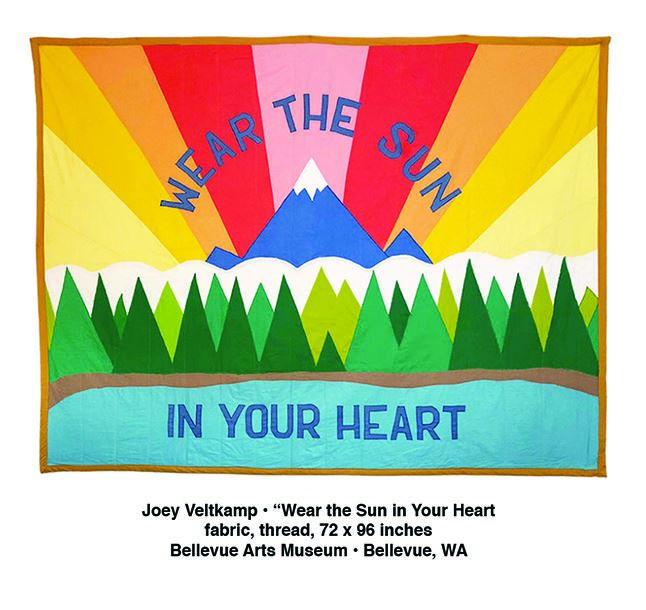
Chloé Dye Sherpe
Chloé Dye Sherpe is a curator and art professional based in Washington State.
“Laboratory for Other Worlds” by Patte Loper and “SPIRIT!” by Joey Veltkamp exhibits are on view through October 23 from Wednesday through Sunday 11 A.M. to 5 P.M. at Bellevue Arts Museum, located at 510 Bellevue Way NE in Bellevue Washington. For more information, visit www.bellevuearts.org.